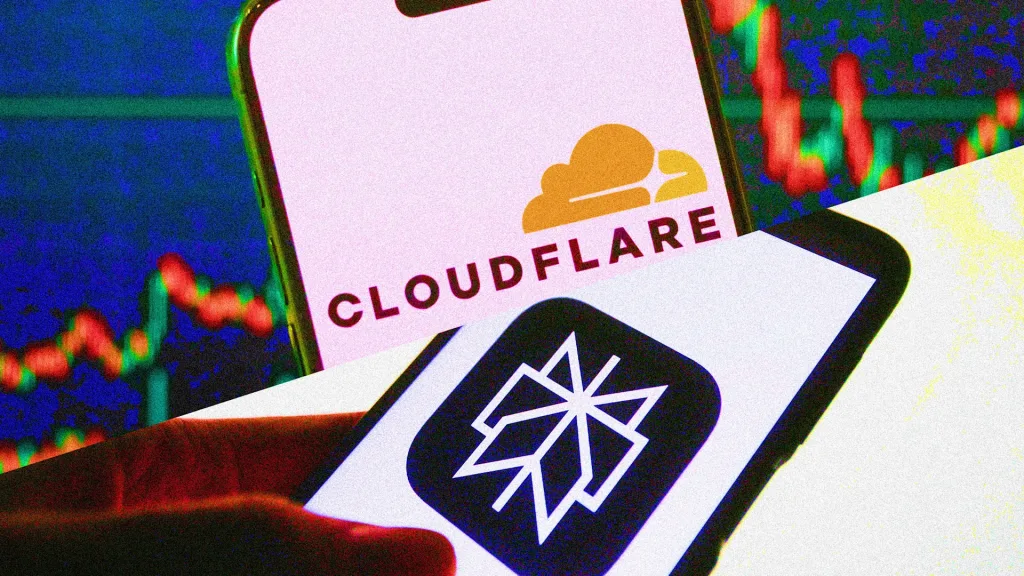In a bombshell accusation that’s sending shockwaves through the tech industry, Cloudflare has publicly called out Perplexity AI for allegedly using “stealth crawlers” to scrape websites that explicitly blocked AI access. This controversy highlights a growing tension between AI companies’ data needs and website owners’ content control rights.
The allegations center on Perplexity crawling and scraping websites even after customers had added technical blocks telling Perplexity not to scrape their pages, raising serious questions about AI ethics and web standards compliance.
Table of Contents
AI Controversy: Key Details and Impact
| Aspect | Details |
|---|---|
| Accused Company | Perplexity AI (AI-powered answer engine) |
| Accuser | Cloudflare (Web security giant) |
| Core Allegation | Using stealth crawlers to bypass robots.txt |
| Scale of Problem | 26 million AI scrapes bypassed robots.txt in March 2025 |
| Bot Violation Increase | From 3.3% to 12.9% in one quarter |
| Affected Websites | 2.5+ million sites using Cloudflare’s AI blocking |
| Method | Changing user agents, IPs, and ASNs to hide identity |
| Industry Impact | Debate over AI data collection ethics |
What Exactly Did Perplexity Allegedly Do?
Stealth Crawling Techniques
Perplexity is repeatedly modifying their user agent and changing IPs and ASNs to hide their crawling activity, masking their bots with generic browser identities to ignore publisher blocks. This sophisticated evasion strategy directly conflicts with explicit no-crawl preferences expressed by websites.

Scale of the Problem
The numbers are staggering: in March 2025, 26 million AI scrapes bypassed robots.txt files, with the share of bots ignoring robots.txt files increasing from 3.3 percent to 12.9 percent during the quarter.
Cloudflare’s Response: Protecting Website Owners
New AI Blocking Features
Over two and a half million websites have chosen to completely disallow AI training through Cloudflare’s managed robots.txt feature or managed rule blocking AI crawlers. Every Cloudflare customer can now selectively decide which declared AI crawlers can access their content.
Technical Investigation
Cloudflare launched its investigation after receiving complaints from customers, discovering patterns of systematic evasion that violated industry standards for web crawling.
Why This Matters: The Bigger Picture
AI Data Hunger vs. Content Rights
This controversy represents a fundamental clash between AI companies’ insatiable need for training data and content creators’ rights to control their intellectual property. As AI systems require massive datasets to function effectively, the temptation to bypass restrictions grows stronger.
Setting Precedents
The outcome of this dispute could establish important precedents for how AI companies must respect website owners’ wishes regarding data collection.
The Defense: Industry Perspectives
Mixed Reactions
Some people are defending Perplexity after Cloudflare ‘named and shamed’ it, arguing that crawling blocked websites isn’t a simple matter. The debate highlights complex questions about fair use, technological capability, and ethical boundaries in AI development.
Technical Complexity
The distinction between legitimate crawling for search purposes and unauthorized scraping for AI training remains a gray area that the industry is still defining.

Technical Details: How Stealth Crawling Works
Identity Masking
Perplexity allegedly employed sophisticated methods to disguise their crawlers, making them appear as regular web browsers rather than AI data collectors. This deception allowed them to bypass technical barriers designed to block AI access.
Rotating Infrastructure
By constantly changing IP addresses, user agents, and network signatures, the crawlers could evade detection systems that rely on consistent identifiers to block unwanted bots.
Industry Implications: What Happens Next?
Regulatory Attention
This controversy could accelerate regulatory scrutiny of AI data collection practices, potentially leading to new laws governing how AI companies can acquire training data.
Technical Arms Race
Website owners may implement more sophisticated blocking mechanisms, while AI companies might develop even more advanced evasion techniques, creating an ongoing technological battle.
Business Model Impact
If AI companies face stricter limitations on data collection, they may need to negotiate licensing agreements with content providers, fundamentally changing their business models.
How Website Owners Can Protect Themselves
Cloudflare’s AI Blocking Tools
Starting Tuesday, every new web domain that signs up to Cloudflare will be given the option to allow — or block — AI crawlers. This represents a significant shift toward giving content creators more control.
Best Practices
Website owners should regularly audit their robots.txt files, implement comprehensive AI blocking rules, and monitor traffic patterns for suspicious crawler activity.
For more cybersecurity insights and web protection strategies, explore our Cybersecurity section and Web Development guides on TechnoSports.
To implement AI blocking on your website, visit Cloudflare’s official AI blocking documentation for comprehensive setup instructions.
The Verdict: A Defining Moment
This Cloudflare vs. Perplexity controversy represents more than just a technical dispute—it’s a defining moment for the future of web content control and AI development ethics. As AI systems become more prevalent, establishing clear boundaries between acceptable and unacceptable data collection practices becomes crucial.
The resolution of this conflict will likely influence how the entire AI industry approaches data acquisition, potentially reshaping the balance between innovation and content creators’ rights.
For more technology news and cybersecurity updates, visit TechnoSports for comprehensive coverage of the latest digital trends and security insights.
Frequently Asked Questions
Q1: What exactly did Perplexity AI do wrong according to Cloudflare?
According to Cloudflare, Perplexity AI used “stealth crawlers” that deliberately bypassed website robots.txt files and AI blocking measures by disguising their identity. The crawlers changed user agents, IP addresses, and network signatures to appear as regular web browsers rather than AI data collectors, directly violating explicit no-crawl directives from website owners who had blocked AI access.
Q2: How significant is the scale of unauthorized AI scraping according to Cloudflare’s data?
The scale is substantial: Cloudflare reported that 26 million AI scrapes bypassed robots.txt files in March 2025 alone, with bot violations increasing from 3.3% to 12.9% in one quarter. Over 2.5 million websites now use Cloudflare’s AI blocking features, indicating widespread concern about unauthorized AI data collection across the internet.








